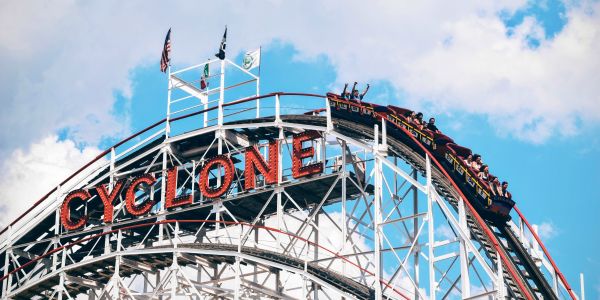Every summer, thrill seekers head to amusement parks for a chance to ride the fastest, tallest and scariest roller coasters. The wind racing, the tracks rumbling, the loop-de-loops and stomach-churning drops; all of it gets our blood pumping and adrenaline flowing. But did you ever wonder exactly what’s happening inside our bodies?
Here’s a quick look at how your body experiences these thrill rides:
Heart
There is no question that the fright and delight of rollercoasters get the heart racing. A German study published in The Journal of the American Medical Association in which coaster riders were fitted with heart monitors found heart rates spiked to over 155 beats per minute. Surprisingly, the highest heart rates were recorded during the slow climb to the top of the first drop, emphasizing the key role of fear and anticipation. While the rising heart rate is not dangerous for young, healthy people, it could set off a heart attack for those with pre-existing heart disease.
Brain
People enjoy scary situations so long as they aren’t in any real danger. Much like watching a scary movie, a roller coaster ride triggers a fight-or-flight response, which releases a cocktail of hormones into your bloodstream. These brain chemicals, including adrenaline, dopamine and cortisol, stimulate a natural high and give you a boost of energy that makes you feel more alert, alive and able to scream your lungs out!
Blood
Roller coasters rely on gravity which can have some interesting physical effects on the body. On the ground you are experiencing 1G, or one times the normal force of gravity, but G-forces get much higher on a rollercoaster. In fact, the record for the highest G-forces on a roller coaster is 6.3Gs! With increasing gravitational pressure, blood is forced toward your feet, making your heart work even harder to get it back up to your brain. The typical human body can withstand around 5Gs, but at these levels the brain is deprived of blood and oxygen, sometimes leading to lightheadedness, vision loss or momentary black-outs.
Balance
Interactions between our eyes and our vestibular system, found in the inner ear, detect motion, balance and spatial orientation. However, the jerky and unpredictable movements of a roller coaster can cause the eye and the ear to send mismatched messages to the brain. For kids, this internal confusion feels exciting. But for adults, who are accustomed to more predictable motion, the outcome is often dizziness, vertigo or motion sickness.
Despite taking the body to extremes, roller coasters are considered remarkably safe overall. In fact, it’s often these intense bodily sensations that make the experience so exhilarating. Just take note of safety precautions listed for each ride such as advice to forego coasters while pregnant or if you have a pre-existing heart condition.
Do you love riding roller coasters? Tell us why or why not in the comments.
If you liked this post, check these out:
- What Happens to Your Body When You Watch a Scary Movie
- Adrenaline Rushes that are Pure Michigan
- Staying Healthy at an Amusement Park can be a Breeze with these Three Tips








